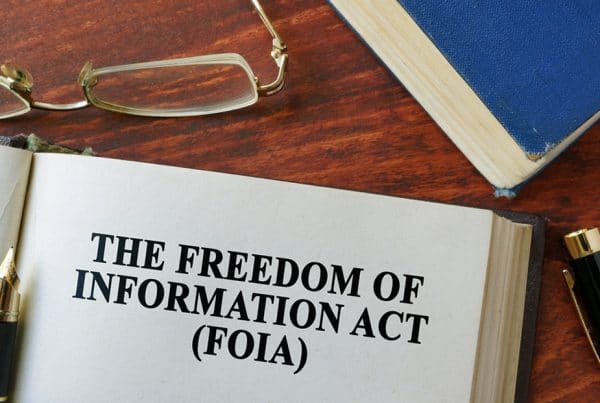In March 2017, the National Archives and Records Administration (NARA) and the Office of Management and Budget (OMB) released a directive which mandated that all agencies must begin to manage their records, including emails and mobile text messages, in electronic format by the end of December 31, 2019.
The mandate included the ability to identify, store, retrieve and retain those records for as long as they are needed so agencies can locate and deliver them in a timely manner, knowing they are trustworthy and complete.
Since then, many federal agencies have already established records management program that takes special consideration to electronic records.
In fact, the 2016 Annual Federal Agency Records Management Report indicated that 79% of agencies report meeting the target of OMB/NARA Managing Government Record Directive to manage both permanent and temporary email records in an accessible electronic format by 2016. Meanwhile, 98% of agencies are optimistic about meeting the goal to manage all permanent electronic records in electronic format by December 31, 2019.
To help agencies manage electronic records, the NARA released the Universal Electronic Records Management (ERM) Requirements, which are “baseline ERM program requirements derived from existing NARA regulations, policy, and guidance.”
The requirements contain six sections based on the lifecycle of electronic records management:
1. Capture – Refers to the idea of placing an object under records management control for disposition and access purposes. Objects are not necessarily moved from the system they reside in when they are captured.
2. Maintenance and Use – The process of managing records through their most active stage. This includes ensuring records are migrated and transformed as systems change, so the records remain usable.
3. Disposal – The period when records have met their retention period and no longer have business value to the organization. Records that meet these conditions are destroyed in accordance with their records retention schedule using methods such as those outlined in NIST Special Publication 800-88.
4. Transfer – Records that are identified as having historical value are permanent records. These permanent records are kept by the agency for a period of time specified by their records retention schedule; the records are then legally transferred to NARA for permanent storage.
5. Metadata – Identifiers that describe the context, content, and structure of the records. Examples include author, document type, date, record category, file size, etc.
6. Reporting – Generating reports to allow for further analysis and to demonstrate effective controls and compliance. Reports may include search results, records eligible for disposition, audit logs, and other customized or ad hoc reports.
Aside from these basic requirements, the Universal ERM also detail seven requirements which must be followed throughout the ERM lifecycle:
- Agencies must manage all electronic records including all recorded information, regardless of form or characteristics, made or received by a Federal agency as evidence of the organization, functions, policies, decisions, procedures, operations, or other activities of the US Government.
- Agencies should monitor and review access rights and permission rules for electronic records regularly; these access rights and permission rules should be updated on a regular basis.
- Agencies must have controls to prevent unauthorized access, alteration, concealment, or destruction of records. Examples include access lists, monitoring, and agent validation.
- Agencies should regularly monitor and evaluate their records controls.
- Agencies retain responsibility for managing their electronic records, regardless of whether they reside in a public, private, or community cloud; a contracting environment; or under the agency’s physical control.
- The records system must have the ability to prevent unauthorized access, modification, or deletion of records, and must ensure that audit trails are in place to track use of the records.
- Agencies must be responsible for monitoring changes to third-party terms of service that may affect the management of records.
These requirements are either “program” requirements, relating to the design and implementation of an agency’s ERM policies and procedures, or “system” requirements, providing technical guidance to vendors in creating ERM tools and specifications for agencies to consider when procuring them.
The requirements are then either mandatory (“Must Have”) or preferred (“Should Have”). These designations help vendors determine what functions their tools must perform, as opposed to those that are ideal. “Must Have” and “Should Have” requirements also help agencies prioritize procurement of these ERM tools according to their needs and financial priorities.
TeleMessage is committed to providing a well-designed mobile text archiving platform to empower federal agencies. We can help you meet the Universal ERM requirements and fully meet the NARA/OMB 2019 mandates for managing electronic records including SMS texts, encrypted communications, direct messages…or any other type of electronic messaging system -align: justify;”>Contact us today by calling +1 (978) 263-1015, or visit our website www.telemessage.com.




